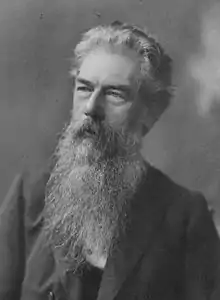Featured article list
Selected article 1
Portal:Engineering/Selected article/1
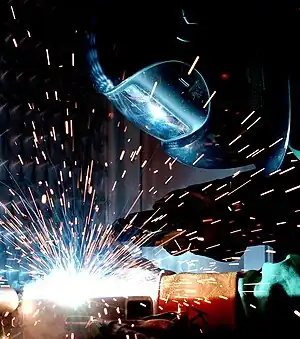
Selected article 2
Portal:Engineering/Selected article/2

The provincial judiciary launched an investigation into the cause of the explosion. Primary suspects were Litoral Gas (the natural-gas provider for Rosario) and an employee who carried out maintenance work at the building that day. Several public figures sent condolences, and most of the candidates for the 2013 primary elections suspended their political campaigns. (Full article...)
Selected article 3
Portal:Engineering/Selected article/3 The Song dynasty (Chinese: 宋朝; 960–1279 CE) invented some technological advances in Chinese history, many of which came from talented statesmen drafted by the government through imperial examinations.
The ingenuity of advanced mechanical engineering had a long tradition in China. The Song engineer Su Song admitted that he and his contemporaries were building upon the achievements of the ancients such as Zhang Heng (78–139), an astronomer, inventor, and early master of mechanical gears. The application of movable type printing advanced the already widespread use of woodblock printing to educate and amuse Confucian students and the masses. The application of new weapons employing the use of gunpowder enabled the Song to ward off its militant enemies—the Liao, Western Xia, and Jin with weapons such as cannons—until its collapse to the Mongol forces of Kublai Khan in the late 13th century.
Notable advances in civil engineering, nautics, and metallurgy were made in Song China, as well as the introduction of the windmill to China during the thirteenth century. These advances, along with the introduction of paper-printed money, helped revolutionize and sustain the economy of the Song dynasty. (Full article...)
Selected article 4
Portal:Engineering/Selected article/4

Selected article 5
Portal:Engineering/Selected article/5
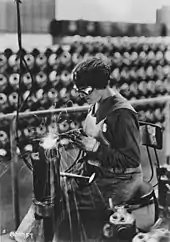
Although less common, there are also solid state welding processes such as friction welding or shielded active gas welding in which metal does not melt. (Full article...)
Selected article 6
Portal:Engineering/Selected article/6
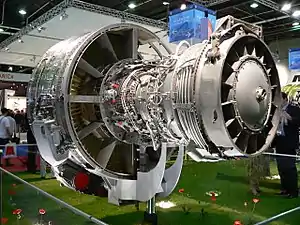
Selected article 7
Portal:Engineering/Selected article/7
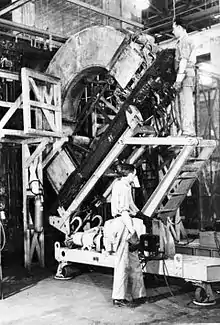
Selected article 8
Portal:Engineering/Selected article/8
.jpg.webp)
Selected article 9
Portal:Engineering/Selected article/9

Selected article 10
Portal:Engineering/Selected article/10

Selected article 11
Portal:Engineering/Selected article/11
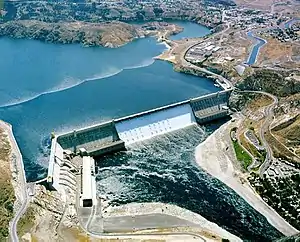
The proposal to build the dam was the focus of a bitter debate during the 1920s between two groups. One group wanted to irrigate the ancient Grand Coulee with a gravity canal, and the other supported a high dam and pumping scheme. Dam supporters won in 1933, but for fiscal reasons the initial design was for a "low dam" 290 feet (88 m) high which would generate electricity, but not support irrigation. The U.S. Bureau of Reclamation and a consortium of three companies called MWAK (Mason-Walsh-Atkinson Kier Company) began construction that year. After visiting the construction site in August 1934, President Franklin Delano Roosevelt began endorsing the "high dam" design which, at 550 ft (168 m) high, would provide enough electricity to pump water to irrigate the Columbia Basin. The high dam was approved by Congress in 1935 and completed in 1942; the first water over-topped its spillway on June 1 of that year. (Full article...)
Selected article 12
Portal:Engineering/Selected article/12

Halkett's first design was a collapsible and inflatable boat made of rubber-impregnated cloth. When deflated, the hull of the boat could be worn as a cloak, the oar used as a walking stick, and the sail as an umbrella. This was followed by a two-man craft that was small enough to fit into a knapsack, and when deflated served as a waterproof blanket.
Although widely praised by Canadian explorers, Halkett's designs had a limited market, and he was unable to persuade the Royal Navy that they would serve any useful purpose in general naval service. Efforts to market them as platforms for fishing and duck shooting failed, and they were commercially unsuccessful. Only two Halkett boats, that of Orcadian explorer John Rae, and one held in the Hudson's Bay Company Museum Collection at the Manitoba Museum are known to survive today. (Full article...)
Selected article 13
Portal:Engineering/Selected article/13
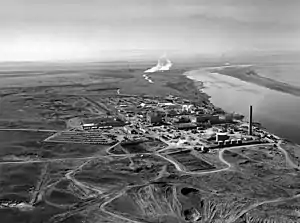
During the Cold War, the project expanded to include nine nuclear reactors and five large plutonium processing complexes, which produced plutonium for most of the more than 60,000 weapons in the U.S. nuclear arsenal. Nuclear technology developed rapidly during this period, and Hanford scientists produced major technological achievements. Many early safety procedures and waste disposal practices were inadequate, and government documents have confirmed that Hanford's operations released significant amounts of radioactive materials into the air and the Columbia River. (Full article...)
Selected article 14
Portal:Engineering/Selected article/14
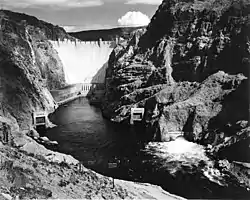
Since about 1900, the Black Canyon and nearby Boulder Canyon had been investigated for their potential to support a dam that would control floods, provide irrigation water and produce hydroelectric power. In 1928, Congress authorized the project. The winning bid to build the dam was submitted by a consortium called Six Companies, Inc., which began construction on the dam in early 1931. Such a large concrete structure had never been built before, and some of the techniques were unproven. The torrid summer weather and lack of facilities near the site also presented difficulties. Nevertheless, Six Companies turned over the dam to the federal government on March 1, 1936, more than two years ahead of schedule. (Full article...)
Selected article 15
Portal:Engineering/Selected article/15

The Ancient Egyptians divided the day into two 12-hour periods, and used large obelisks to track the movement of the sun. They also developed water clocks, which were probably first used in the Precinct of Amun-Re, and later outside Egypt as well; they were employed frequently by the Ancient Greeks, who called them clepsydrae. The Zhou dynasty is believed to have used the outflow water clock around the same time, devices which were introduced from Mesopotamia as early as 2000 BCE.
Other ancient timekeeping devices include the candle clock, used in ancient China, ancient Japan, England and Mesopotamia; the timestick, widely used in India and Tibet, as well as some parts of Europe; and the hourglass, which functioned similarly to a water clock. The sundial, another early clock, relies on shadows to provide a good estimate of the hour on a sunny day. It is not so useful in cloudy weather or at night and requires recalibration as the seasons change (if the gnomon was not aligned with the Earth's axis). (Full article...)
Selected article 16
Portal:Engineering/Selected article/16

The components of a mechanical filter are all directly analogous to the various elements found in electrical circuits. The mechanical elements obey mathematical functions which are identical to their corresponding electrical elements. This makes it possible to apply electrical network analysis and filter design methods to mechanical filters. Electrical theory has developed a large library of mathematical forms that produce useful filter frequency responses and the mechanical filter designer is able to make direct use of these. It is only necessary to set the mechanical components to appropriate values to produce a filter with an identical response to the electrical counterpart. (Full article...)
Selected article 17
Portal:Engineering/Selected article/17
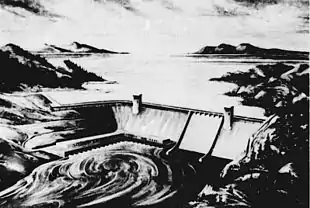
The resulting dam would have created a lake roughly the size of Lake Erie, making it the largest man-made reservoir in the world. The plan for the dam itself called for a concrete structure 530 feet (162 m) high with a top length of about 4,700 feet (1,430 m). The proposed power facilities would have consistently generated between 3.5 and 5 gigawatts of electricity, based on the flow of the river as it differs between winter and summer. (Full article...)
Selected article 18
Portal:Engineering/Selected article/18

At the end of 2015, there was 7,723 megawatts (MW) of installed renewable electricity capacity in Scotland, an increase of 5.5% (or 406 MW) from the end of 2014. Renewable electricity generation in Scotland was 21,983 GWh in 2015, up 15.2% on 2014. 57.7 per cent of Scotland's electricity came from renewables in 2015. Scottish renewable generation makes up approximately 26.4% of total UK renewable generation (down from 32% in 2014). In 2014, Scotland exported over 24 per cent of generation. (Full article...)
Selected article 19
Portal:Engineering/Selected article/19
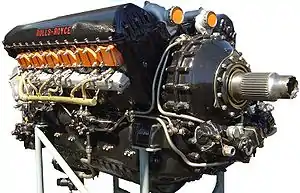
After several modifications, the first production variants of the PV-12 were completed in 1936. The first operational aircraft to enter service using the Merlin were the Fairey Battle, Hawker Hurricane and Supermarine Spitfire. More Merlins were made for the four-engined Avro Lancaster heavy bomber than for any other aircraft; however, the engine is most closely associated with the Spitfire, starting with the Spitfire's maiden flight in 1936. A series of rapidly applied developments, brought about by wartime needs, markedly improved the engine's performance and durability. (Full article...)
Selected article 20
Portal:Engineering/Selected article/20
.JPG.webp)
The R was used with great success in the Schneider Trophy seaplane competitions held in England in 1929 and 1931. Shortly after the 1931 competition, an R engine using a special fuel blend powered the winning Supermarine S.6B aircraft to a new airspeed record of over 400 miles per hour (640 km/h). Continuing through the 1930s, both new and used R engines were used to achieve various land and water speed records by such racing personalities as Sir Henry Segrave, Sir Malcolm Campbell and his son Donald, the last record being set in 1939. A final R-powered water speed record attempt by Donald Campbell in 1951 was unsuccessful. (Full article...)
Selected article 21
Portal:Engineering/Selected article/21

A protest group was formed to resist the proposed construction, and attracted support from the botanist and environmental campaigner David Bellamy. Despite the opposition, planning permission was granted in 2005 and construction began in 2007. Although work on the project was hampered by harsh weather, difficult terrain, and previous mining activity, the wind farm was officially opened on 25 September 2008 after "years of controversy", at a cost of £50 million. (Full article...)
Selected article 22
Portal:Engineering/Selected article/22
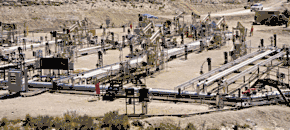
Shale oil extraction is usually performed above ground (ex situ processing) by mining the oil shale and then treating it in processing facilities. Other modern technologies perform the processing underground (on-site or in situ processing) by applying heat and extracting the oil via oil wells. (Full article...)
Selected article 23
Portal:Engineering/Selected article/23
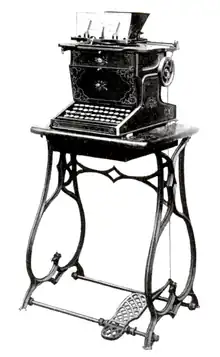
During its development, the typewriter evolved from a crude curiosity into a practical device, the basic form of which became the industry standard. The machine incorporated elements which became fundamental to typewriter design, including a cylindrical platen and a four-rowed QWERTY keyboard. Several design deficiencies remained, however. The Sholes and Glidden could print only upper-case letters—an issue remedied in its successor, the Remington No. 2—and was a "blind writer", meaning the typist could not see what was being written as it was entered. (Full article...)
Selected article 24
Portal:Engineering/Selected article/24

The project, sometimes called "Phase One", was intended to allow the United States to learn from Russian experience with long-duration spaceflight and to foster a spirit of cooperation between the two nations and their space agencies, the US National Aeronautics and Space Administration (NASA) and the Russian Federal Space Agency (Roskosmos). The project helped to prepare the way for further cooperative space ventures; specifically, "Phase Two" of the joint project, the construction of the International Space Station (ISS). The program was announced in 1993, the first mission started in 1994 and the project continued until its scheduled completion in 1998. Eleven Space Shuttle missions, a joint Soyuz flight and almost 1000 cumulative days in space for American astronauts occurred over the course of seven long-duration expeditions. (Full article...)
Selected article 25
Portal:Engineering/Selected article/25
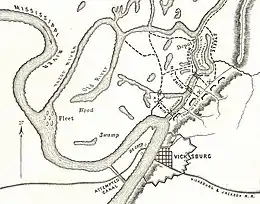
Grant's Canal (also known as Williams's Canal) was an incomplete military effort to construct a canal through De Soto Point in Louisiana, across the Mississippi River from Vicksburg, Mississippi. During the American Civil War, United States Navy forces attempted to capture the Confederate-held city of Vicksburg in 1862, but were unable to do so with army support. Union Brigadier General Thomas Williams was sent to De Soto Point with 3,200 men to dig a canal capable of bypassing the strong defenses around Vicksburg. Despite help from local plantation slaves, disease and falling river levels prevented Williams from successfully constructing the canal, and the project was abandoned until January 1863, when Union Major General Ulysses S. Grant took an interest in the project.
Grant attempted to resolve some of the issues inherent to the concept by moving the upstream entrance to a spot with a stronger current, but the heavy rains and flooding that broke a dam prevented the project from succeeding. Work was abandoned in March, and Grant eventually used other methods to capture Vicksburg, whose Confederate garrison surrendered on July 4, 1863. In 1876, the Mississippi River changed course to cut across De Soto Point, eventually isolating Vicksburg from the river, but the completion of the Yazoo Diversion Canal in 1903 restored Vicksburg's river access. Most of the canal site has since been destroyed by agriculture, but a small section survives. This section was donated by local landowners to the National Park Service and became part of Vicksburg National Military Park in 1990. A 1974 article in The Military Engineer calculated that the canal would likely have been successful if the dam at the downstream end of the canal had been opened. (Full article...)
Selected article 26
Portal:Engineering/Selected article/26

Waveguide filters were developed during World War II to meet the needs of radar and electronic countermeasures, but afterwards soon found civilian applications such as use in microwave links. Much of post-war development was concerned with reducing the bulk and weight of these filters, first by using new analysis techniques that led to elimination of unnecessary components, then by innovations such as dual-mode cavities and novel materials such as ceramic resonators. (Full article...)
Selected article 27
Portal:Engineering/Selected article/27 Earl William "Madman" Muntz (January 3, 1914 – June 21, 1987) was an American businessman and engineer who sold and promoted cars and consumer electronics in the United States from the 1930s until his death in 1987. He was a pioneer in television commercials with his oddball "Madman" persona; an alter ego who generated publicity with his unusual costumes, stunts, and outrageous claims. Muntz also pioneered car stereos by creating the Muntz Stereo-Pak, better known as the 4-track cartridge, a predecessor to the 8-track cartridge developed by Lear Industries.
He invented the practice that came to be known as Muntzing, which involved simplifying otherwise complicated electronic devices. Muntz produced and marketed the first black-and-white television receivers to sell for less than $100, and created one of the earliest functional widescreen projection TVs. He was credited with coining the abbreviation "TV" for television, although the term had earlier been in use in call letters for stations such as WCBS-TV. A high school dropout, Muntz made fortunes by selling automobiles, TV receivers, and car stereos and tapes. A 1968 Los Angeles Times article noted that in one year he sold $72 million worth of cars; five years later he sold $55 million worth of TV receivers, and in 1967 he sold $30 million worth of car stereos and tapes.
After his success as a used car salesman and with Kaiser-Frazer dealerships in Los Angeles and New York City, Muntz founded the Muntz Car Company, which made the "Muntz Jet", a sports car with jet-like contours. The car was manufactured between 1951 and 1953, although fewer than 400 were produced. (Full article...)
Selected article 28
Portal:Engineering/Selected article/28

Gas tungsten arc welding (GTAW), also known as tungsten inert gas (TIG) welding, is an arc welding process that uses a non-consumable tungsten electrode to produce the weld. The weld area and electrode are protected from oxidation or other atmospheric contamination by an inert shielding gas (argon or helium). A filler metal is normally used, though some welds, known as 'autogenous welds', or 'fusion welds' do not require it. When helium is used, this is known as heliarc welding. A constant-current welding power supply produces electrical energy, which is conducted across the arc through a column of highly ionized gas and metal vapors known as a plasma. TIG welding is most commonly used to weld thin sections of stainless steel and non-ferrous metals such as aluminum, magnesium, and copper alloys. The process grants the operator greater control over the weld than competing processes such as shielded metal arc welding and gas metal arc welding, allowing stronger, higher-quality welds. However, TIG welding is comparatively more complex and difficult to master, and furthermore, it is significantly slower than most other welding techniques. A related process, plasma arc welding, uses a slightly different welding torch to create a more focused welding arc and as a result is often automated. (Full article...)
Selected article 29
Portal:Engineering/Selected article/29
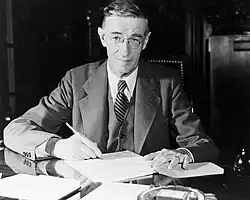
Vannevar Bush (/væˈniːvɑːr/ van-NEE-var; March 11, 1890 – June 28, 1974) was an American engineer, inventor and science administrator, who during World War II headed the U.S. Office of Scientific Research and Development (OSRD), through which almost all wartime military R&D was carried out, including important developments in radar and the initiation and early administration of the Manhattan Project. He emphasized the importance of scientific research to national security and economic well-being, and was chiefly responsible for the movement that led to the creation of the National Science Foundation.
Bush joined the Department of Electrical Engineering at Massachusetts Institute of Technology (MIT) in 1919, and founded the company that became the Raytheon Company in 1922. Bush became vice president of MIT and dean of the MIT School of Engineering in 1932, and president of the Carnegie Institution of Washington in 1938.
During his career, Bush patented a string of his own inventions. He is known particularly for his engineering work on analog computers, and for the memex. Starting in 1927, Bush constructed a differential analyzer, a mechanical analog computer with some digital components that could solve differential equations with as many as 18 independent variables. An offshoot of the work at MIT by Bush and others was the beginning of digital circuit design theory. The memex, which he began developing in the 1930s (heavily influenced by Emanuel Goldberg's "Statistical Machine" from 1928) was a hypothetical adjustable microfilm viewer with a structure analogous to that of hypertext. The memex and Bush's 1945 essay "As We May Think" influenced generations of computer scientists, who drew inspiration from his vision of the future. (Full article...)
Selected article 30
Portal:Engineering/Selected article/30
Norman Selfe (9 December 1839 – 15 October 1911) was an Australian engineer, naval architect, inventor, urban planner and outspoken advocate of technical education. After emigrating to Sydney with his family from England as a boy he became an apprentice engineer, following his father's trade. Selfe designed many bridges, docks, boats, and much precision machinery for the city. He also introduced new refrigeration, hydraulic, electrical and transport systems. For these achievements he received international acclaim during his lifetime. Decades before the Sydney Harbour Bridge was built, the city came close to building a Selfe-designed steel cantilever bridge across the harbour after he won the second public competition for a bridge design.
Selfe was honoured during his life by the name of the Sydney suburb of Normanhurst, where his grand house Gilligaloola is a local landmark. He was energetically involved in organisations such as the Sydney Mechanics' School of Arts and the Australian Historical Society. As president of the Board of Technical Education, he fought consistently for the establishment of an independent system of technical education to serve the needs of a rapidly industrialising society. He was acknowledged upon his death as one of the best-known people in, and greatest individual influences upon, the city of Sydney. (Full article...)
Instructions
The layout design for these subpages is at Template:Selected article.
- Add a new article to the next available subpage.
- The "blurb" for each article should be approximately 10 lines, for appropriate formatting in the portal main page.
- The edit summary for each new subpage should link to the article from which the text was copied
